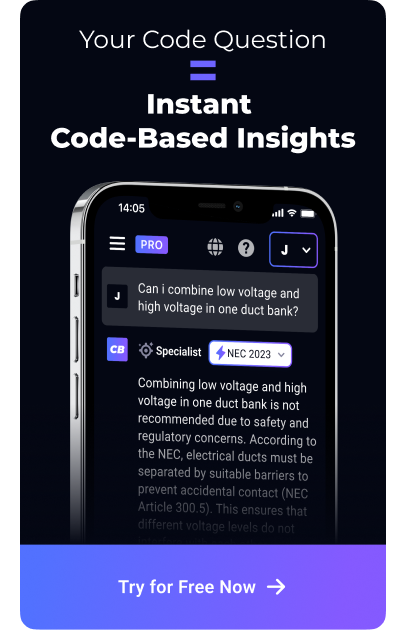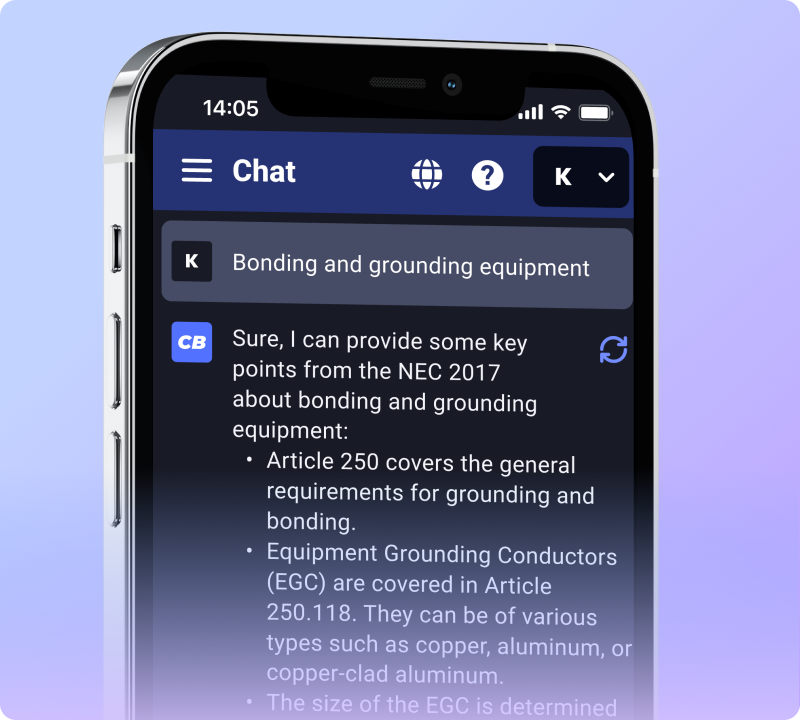Electricians often face confusion with the Washington state electrical code. This set of rules is key for safe electrical work in the state. Our article breaks down these regulations and how to follow them.
Keep reading to learn more.
Key Takeaways
- Electricians in Washington State must follow the state electrical code, which requires knowledge of both local guidelines and the National Electrical Code (NEC) for safe installations.
- Regular updates to the electrical code mean electricians need to stay informed about changes that could affect their work, including safety standards and installation practices.
- Safety standards are crucial for preventing accidents and ensuring quality work. Compliance with these regulations is verified through inspections based on detailed checklists.
- Inspections play a key role in enforcing compliance with the Washington State Electrical Code, requiring electricians’ work to meet specific requirements during various project stages.
- Understanding mandatory rules versus permissive ones helps electricians navigate the flexibility within the code while maintaining overall safety and compliance.
Overview of Washington State Electrical Code
The Washington State Electrical Code establishes essential guidelines for electrical installations. These regulations ensure safety and compliance across residential and commercial projects in the state.
Electrical Laws and Rules
Electrical laws and rules govern all electrical installations in Washington State. These laws ensure safety and compliance for both residential and commercial projects. Electricians must understand these regulations to perform safe work.
The laws outline requirements for equipment, materials, and installation methods. They also specify adherence to the National Electrical Code (NEC). Compliance with these standards prevents accidents and protects lives.
Electricians should stay current with industry practices as well. They need to recognize changes in codes that could affect their work. Regular training helps maintain knowledge of evolving electrical safety standards.
Understanding these elements is essential for effective inspections and enforcement efforts within the state’s electrical regulations.
NFPA Codes and Standards
The National Fire Protection Association (NFPA) creates codes and standards vital for electrical safety. These guidelines help electricians ensure their work meets high safety standards.
The NFPA 70, known as the National Electrical Code (NEC), covers essential regulations for electrical installations. Electricians should focus on compliance with these industry practices to reduce risks.
These codes establish criteria that professionals must follow in both residential and commercial settings. Regular code updates keep electricians informed about new requirements and improve overall safety measures.
Understanding these standards is crucial for maintaining compliance with the Washington State Electrical Code. Next, we will explore compliance standards for electrical installations more closely.
Compliance Standards for Electrical Installations
Compliance standards for electrical installations ensure safety and reliability. Electricians must follow specific regulations to meet industry practices and government requirements.
Safety Standards
Safety standards play a crucial role in electrical installations. These regulations ensure that electricians follow safe practices while working with electrical systems. Compliance with safety standards protects both workers and property from hazards like shocks and fires.
Electricians must adhere to the National Electrical Code (NEC) and Washington State Electrical Code. Keeping up with electrical safety regulations helps prevent accidents. Following these guidelines also ensures quality work and mitigates potential code violations during inspections.
Industry Practices
Industry practices play a crucial role in maintaining electrical safety and code compliance. Electricians must stay updated with the latest regulations to ensure safe installations.
Following established electrical installation standards reduces the risk of accidents and code violations. Regular training helps electricians understand changes in state electrical laws and national guidelines.
These industry practices support adherence to the Washington State Electrical Code. Effective collaboration among professionals enhances overall compliance within both residential and commercial settings.
Inspectors often use specific inspection checklists to evaluate whether projects meet necessary codes. Knowledge of best practices empowers electricians to deliver high-quality work while adhering to safety standards in every project.
Regulatory Information
Regulatory information provides a framework for electrical code compliance in Washington State. Electricians must follow these crucial regulations to ensure safety and efficiency. The Washington State Electrical Code outlines the standards for residential and commercial installations.
Compliance with these guidelines helps prevent electrical code violations, ensuring safe practices.
Electrical equipment standards play a vital role in regulatory compliance. Adhering to the National Electrical Code (NEC) is essential for all projects. Electricians should keep up-to-date with inspection checklists and mandatory rules set by the NEC.
Staying informed about changes in regulation will enhance your expertise in electrical safety requirements and industry practices.
Inspection Checklist
An inspection checklist ensures compliance with the Washington State Electrical Code. Electricians should use this tool to confirm they meet all electrical code requirements during installation and upgrades.
The checklist includes key items like verifying grounding, checking circuit connections, and inspecting wire insulation. Safety standards play a crucial role in every inspection. Following industry practices helps create safer environments for residents and businesses alike.
Each item on the checklist serves as a guide to maintain high standards in electrical work. Understanding the National Electrical Code (NEC) also aids electricians in making informed decisions about installations and repairs.
Code Updates
Code updates occur regularly in Washington State. These changes might affect your electrical installations. Staying informed about the latest amendments ensures compliance with the Washington State Electrical Code.
Each update reflects advancements in safety standards and industry practices.
Electricians must review these updates to comply with both state and national regulations. Understanding the National Electrical Code (NEC) helps clarify mandatory rules as well as optional ones.
Inspections may include checks for adherence to recent updates, making awareness crucial for anyone involved in electrical work.
Understanding the National Electrical Code (NEC)
The National Electrical Code (NEC) sets the standard for safe electrical installations. Electricians must follow these guidelines to ensure their work meets safety regulations and industry norms.
Purpose and Scope
The National Electrical Code (NEC) serves a vital role in ensuring safety and reliability in electrical installations. This code outlines the necessary requirements for both residential and commercial electrical systems.
Electricians must understand NEC to provide safe and compliant services. It addresses various aspects, including wiring methods, grounding techniques, and equipment standards.
Washington State adopts NEC while integrating its regulations specific to local conditions. Electricians should familiarize themselves with these state-specific changes to ensure compliance with the Washington State Electrical Code.
Understanding both codes helps professionals maintain high safety standards during their work on electrical installations.
Mandatory and Permissive Rules
Mandatory rules in the Washington State Electrical Code require electricians to follow strict guidelines. These laws set safety standards for installations and ensure compliance with electrical equipment standards.
Electricians must adhere to these requirements without exception.
Permissive rules offer flexibility within the code. They allow for alternative methods that still meet safety regulations. Electricians can opt for different industry practices as long as they maintain overall compliance.
This balance helps adapt to various project needs while keeping safety a top priority. Understanding both types of rules is crucial for successful electrical code enforcement and inspections in residential and commercial settings.
Formal Interpretations
Formal interpretations clarify the National Electrical Code (NEC) and Washington State Electrical Code requirements. They help electricians understand how to apply specific rules in real-world situations.
Local agencies or jurisdictions often issue these interpretations.
Electricians can rely on formal interpretations for guidance during installations. These documents outline accepted practices and ensure compliance with electrical industry regulations.
Formal interpretations also reduce confusion, making it easier to meet safety standards and pass electrical code inspections.
Ensuring Compliance with the Washington State Electrical Code
Electricians must follow the Washington State Electrical Code closely. Adhering to these guidelines ensures safety and efficiency in all electrical work.
Residential Electrical Code Compliance
Residential electrical code compliance ensures safety in homes. Electricians must follow the Washington State Electrical Code and the National Electrical Code (NEC) for every installation.
Local codes may have specific requirements that differ from national standards. Compliance starts with understanding these regulations.
Safety standards guide how to install wiring, outlets, and fixtures. Inspectors check if installations meet these guidelines during inspections. Each checklist item is crucial for passing inspections and ensuring safety in residential properties.
Keeping up with electrical code updates also helps electricians stay compliant and informed about any changes affecting their work.
Commercial Electrical Code Compliance
Commercial Electrical Code compliance ensures safe and efficient electrical installations in businesses. Electricians must follow regulations that include standards from the National Electrical Code (NEC) and Washington State’s requirements.
These guidelines help prevent hazards such as fires or electrical failures.
Electricians should familiarize themselves with mandatory rules for commercial structures. Compliance requires proper installation of wiring, circuit breakers, and outlets. Regular inspections verify adherence to these codes.
Understanding industry practices also enhances safety during electrical projects in commercial settings.
Inspection and Enforcement
Inspection and enforcement play a crucial role in maintaining compliance with the Washington State Electrical Code. Authorities regularly inspect electrical installations for safety and code adherence.
Electricians must ensure that their work meets all relevant standards to avoid penalties.
Local building departments conduct inspections at various stages of a project. They check for proper wiring techniques, grounding methods, and equipment installation. Following the National Electrical Code (NEC) is essential for both residential and commercial projects.
Staying updated on changes can help you avoid mistakes during inspections. Be prepared by using an inspection checklist to assess your work before the final review.
Conclusion
Understanding the Washington State Electrical Code is essential for electricians. This code ensures safety and compliance in electrical installations. Familiarity with both local regulations and the National Electrical Code helps avoid costly mistakes.
Keeping up with updates guarantees that your work meets current standards. Prioritize knowledge to ensure all electrical projects run smoothly and safely.

